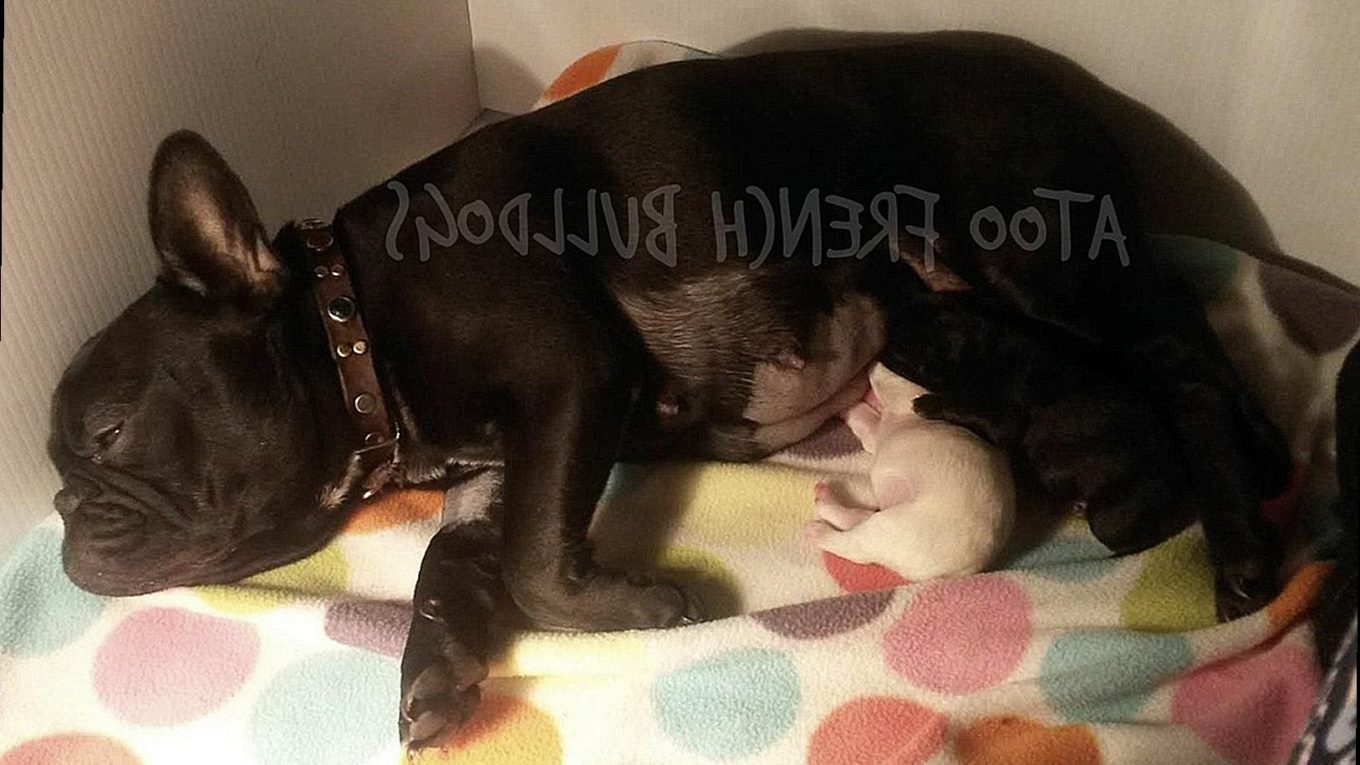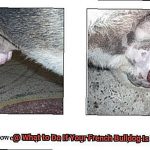What to Do If Your French Bulldog Got Stung By A Bee?
Nobody likes to see their beloved pet suffer, especially our French Bulldogs.
But what do you do if your pup has been stung by a bee? Don’t worry.
In this blog post, we’ll discuss exactly what to do if your French Bulldog is stung by a bee. Did you know that bees can cause an allergic reaction in some dogs?

That’s why it’s important to be aware of the signs and take swift action if necessary. We’ll also cover how to recognize the situation and determine whether or not your dog needs medical attention.
Plus, we’ll show you how to remove the stinger from your puppy’s skin as well as how to minimize swelling and pain. Finally, we’ll discuss how to avoid future bee stings and keep your French Bulldog safe.
So if you want to know more about What To Do If Your French Bulldog Was Stung By A Bee – read on.
What to Do Immediately After a Bee Sting
Contents
- 1 What to Do Immediately After a Bee Sting
- 2 How to Identify if Your Dog Has Been Stung by a Bee
- 3 Signs and Symptoms of a Bee Sting in Dogs
- 4 What Can I Put on My Dog That Got Stung by a Bee?
- 5 Should I Take My Dog to the Vet for a Bee Sting?
- 6 How Long Does a Bee Sting Hurt a Dog?
- 7 Prevention Tips and Strategies
- 8 Conclusion
When your beloved French Bulldog is stung by a bee, it can be an incredibly scary experience. But don’t panic. Taking the right action quickly can make all the difference in minimizing pain and preventing any further complications. Here’s what you need to do if your pup is stung.
First, check for the stinger and remove it as soon as possible. To do this, use a flat edge like a credit card or fingernail, but avoid squeezing or pulling it as this will release more venom into your pup’s body.
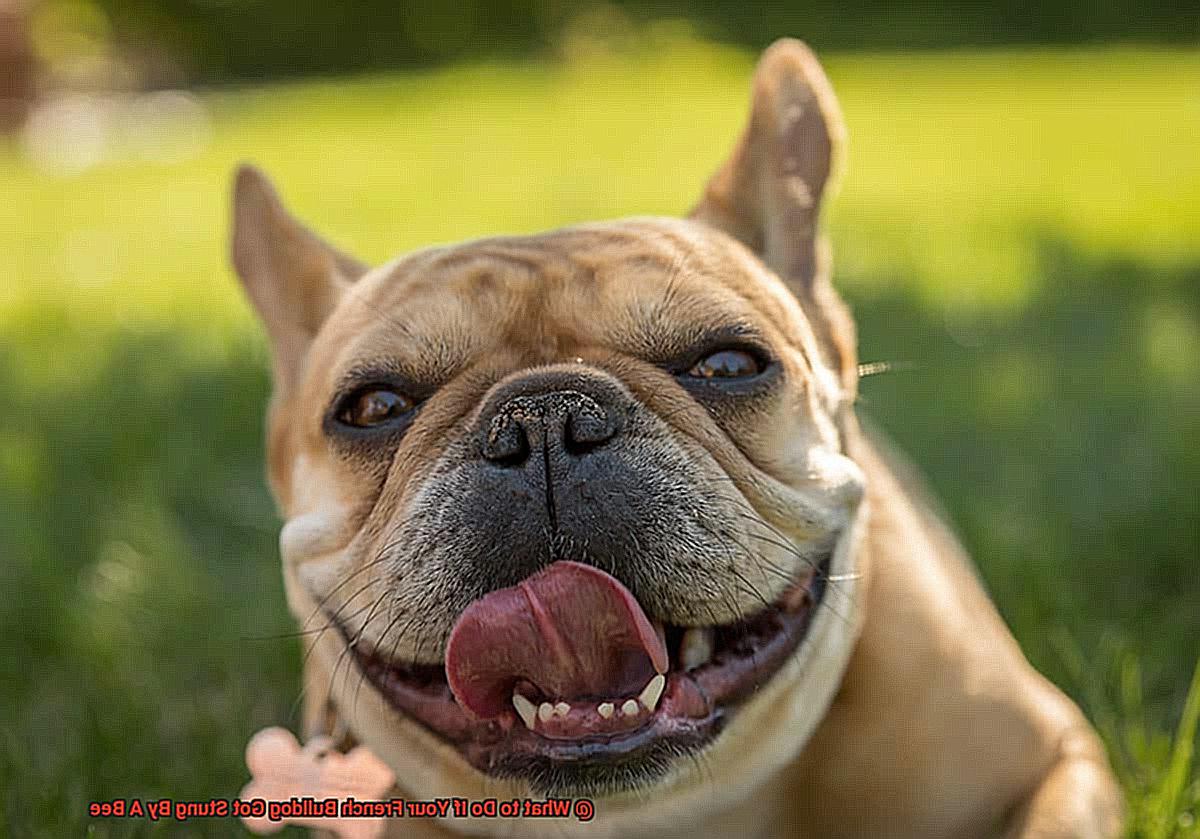
To reduce swelling and pain, apply a cold compress or ice pack. To prevent direct contact with the skin, wrap the ice pack in a towel – otherwise, you could risk frostbite. Alternatively, you can make a paste using baking soda and water and then apply it to the sting site for 10-15 minutes.
Be sure to monitor your pup closely for signs of an allergic reaction such as difficulty breathing, swelling of the face, or vomiting. If you find any troubling signs or if your dog has had multiple stings, seek veterinary attention immediately – they can often prescribe antihistamines or corticosteroids to reduce the allergic reaction and promote healing.
Finally, take precautions against future bee stings by keeping your dog away from flowering plants and gardens where bees tend to gather. When exploring bee-infested areas together, give them extra protection by wearing a beekeeper suit.
Regular grooming and sanitizing of their hair and skin can also help reduce their chances of being stung again in future.
How to Identify if Your Dog Has Been Stung by a Bee
It can be an uncomfortable experience for both you and your pup. Knowing how to identify if your dog has been stung by a bee is essential in order to ensure their safety and avoid any potential complications.
First, check for physical signs such as swelling or redness around the sting location. You may also spot a tiny bump or puncture wound, and if it is not, scrape it off with a flat object like a credit card.
Additionally, look out for any behavioral changes in your dog following a bee sting. Your pup may become restless, whine, rub the affected area of their body against furniture, or even become more vocal or anxious.
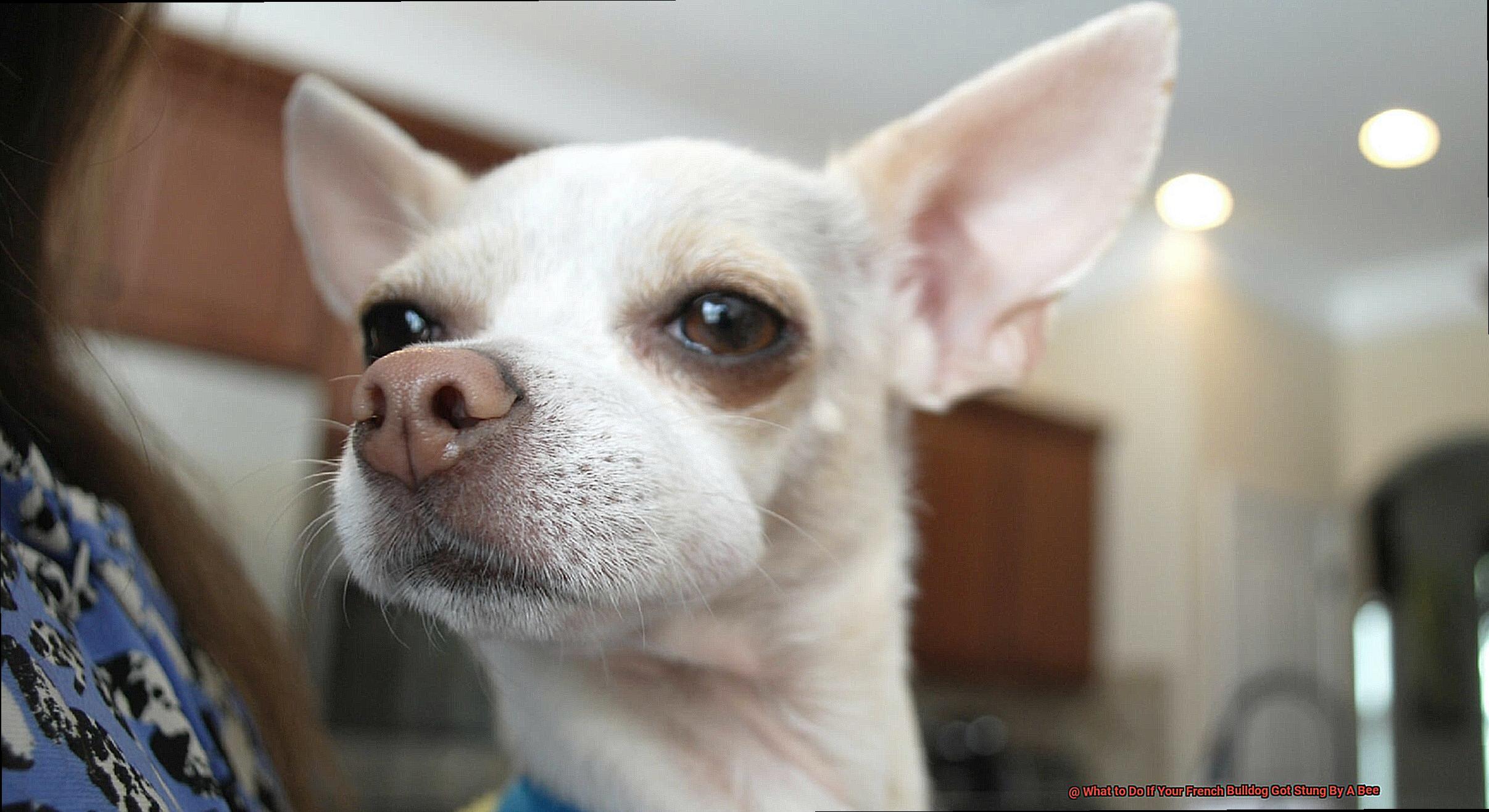
In some cases, dogs may have an allergic reaction to bee stings. This could result in difficulty breathing, vomiting, diarrhea, or collapsing. If this happens, seek urgent veterinary attention right away.
Furthermore, if your French Bulldog has been stung by multiple bees and shows signs of extreme swelling, difficulty breathing, vomiting, or collapsing.
It’s important to be aware of the warnings of bee stings so that you can take prompt action if necessary.
Signs and Symptoms of a Bee Sting in Dogs
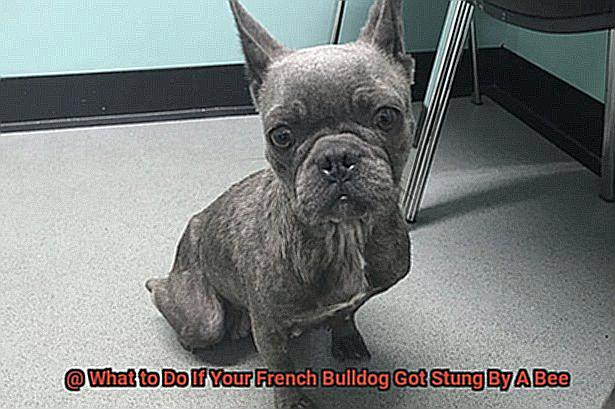
Bee stings can be a real problem for our four-legged friends, so it’s essential to know the signs and symptoms of a bee sting in dogs.
The most common sign is swelling at the site of the sting, which may be accompanied by pain, redness and warmth. This can be localized to the face or paws, but it can also spread throughout the body.
Other symptoms may include excessive drooling, vomiting, diarrhea, and difficulty breathing. It’s important to note that not all dogs have the same reaction to bee stings.
Some may experience mild swelling and irritation, while others may develop a more severe allergic reaction called anaphylaxis. In this case, your dog may have difficulty breathing, swollen face and tongue – this is a medical emergency that requires immediate veterinary attention.
If your French Bulldog has been stung multiple times or if you notice any troubling signs such as hunger, agitation, vomiting or difficulty breathing, don’t hesitate to call your veterinarian right away. They may use antihistamines or corticosteroids to prevent allergic reactions and promote healing.
You can also give them a protective shield like a beekeeper suit for additional security when looking into bee-infested areas.
What Can I Put on My Dog That Got Stung by a Bee?
When your beloved French bulldog is stung by a bee, it can be an alarming experience for both of you.
But with the right care and attention, your pup will soon be back to their usual happy self. The first step is to check if the stinger remains lodged in the skin.
If it is still present, remove it as quickly as possible to prevent any more venom from entering your dog’s body. To reduce swelling and discomfort, apply a cold compress or ice pack to the sting site for several minutes several times a day.
You can also make a paste of baking soda and water and then apply it on the sting site for 10 minutes – this will help to neutralize the venom and reduce itching and pain. If your dog is showing signs of an allergic reaction or severe swelling, respiratory issues or difficulty breathing, seek veterinary care immediately.
Your vet may use antihistamines or corticosteroids to reduce inflammation and allergic reactions. To minimize the risk of future stings, keep your pup away from areas where bees tend to gather, such as flowering plants or gardens.
Regular grooming and sanitizing of your dog’s coat and environment can also help keep them safe in the long term.
Should I Take My Dog to the Vet for a Bee Sting?
When your French Bulldog is stung by a bee, it’s important to assess the severity of the sting and your pup’s reaction to it in order to determine whether or not they need to see a vet.
If you notice any signs of an allergic reaction, such as difficulty breathing, swelling of the face or throat, or severe vomiting, it is critical to seek veterinary care immediately. These reactions can be life-threatening and require quick treatment.
On the other hand, if your dog only experiences a mild reaction, such as hives or mild swelling at the site of the sting, you may not need to rush them off to the hospital. However, it is still essential to keep an eye on their behavior, appetite and energy levels for any changes that could indicate a more serious problem.
If you’re unsure what steps to take next, don’t hesitate to consult with your vet for guidance. It’s also important not to try any home remedies or attempt to remove the bee’s stinger yourself as this could make things worse.
Instead, observe and monitor your pet’s reactions and contact your veterinarian for advice on how best to proceed.
How Long Does a Bee Sting Hurt a Dog?
It can be a traumatic experience for both of you, but with the right care and attention, most dogs will recover from bee stings within a few days.
The duration of the sting’s effect depends on the severity of the bite, the location of the sting, and the breed of your dog. For instance, a bee sting on their paw can cause more intense pain and last longer than if they were stung on their back.
If your dog has multiple stings, their reaction could be more severe and take longer to heal. It is also essential to look out for signs of an allergic reaction leading to anaphylaxis.
If you notice any symptoms like facial swelling, hives, severe itching or difficulty breathing, seek veterinary attention immediately. To help alleviate your dog’s discomfort after a bee sting, apply a cold compress or ice wrapped in a towel for around 10-15 minutes several times a day.
Additionally, you can administer an over-the-counter antihistamine medication with veterinary advice. Avoid giving human medication without consulting your vet first as some may be toxic to dogs.
To prevent future bee stings and reduce risk, keep your pup away from flowering plants and other outdoor areas where bees are likely to gather. You can also provide them with protective clothing such as a beekeeper suit when investigating these areas.
Prevention Tips and Strategies
It’s a bee-utiful day, and you want to take your French Bulldog out for a walk. But before heading out the door, there are some essential tips and techniques to keep your pup from being stung by a bee.
First and foremost, it’s important to keep your yard free of bees or wasps’ nests. Regularly inspect the outside of your house and remove any nests you find. To discourage bees and wasps, you can also hang decoy wasp nests or use essential oils like peppermint, clove, and lemongrass.
When walking your dog outdoors, avoid areas with flower beds or freshly bloomed flowers as they attract bees. Stick to grassy areas instead and keep your pup on a leash in unfamiliar areas where a beehive is present. It’s also crucial to regularly groom your dog and check for signs of stings such as swelling, redness, or pain. Keep your pup’s ears clean so bees have no place to hide.
Investing in a bee sting kit made explicitly for dogs is another great way to safeguard your pet. These kits usually contain antihistamines and corticosteroids that reduce swelling, pain, and itching after a bee sting. Bring it with you when you go out for walks or travel for added protection.
Conclusion
No one likes to see their beloved pet in pain, especially our French Bulldogs.
Bee stings can be painful and frightening for both of you, but with the right care and attention, your pup will soon be back to their old happy self. Be aware of the signs and symptoms of a bee sting in dogs – most notably swelling at the sting site, followed by pain, redness, and warmth.
Other signs may include excessive drooling, vomiting, diarrhea, respiratory difficulties or anaphylaxis – a life-threatening allergic reaction. If you find any troubling signs or if your dog has had multiple stings, seek urgent medical attention.
Reduce swelling and pain after a bee sting by applying a cold compress or ice pack several times a day to the affected area. Make a paste of baking soda and water and then apply it on the sting site for ten minutes – this will help to neutralize the venom and minimize itching and pain.
Minimize future stings by keeping your pup away from areas where bees are most common such as flowering plants or gardens. Regular grooming and sanitizing of your dog’s coat and environment will also help them to stay healthy long term.
Investing in a bee sting kit made specifically for dogs is another great way to shield your dog from future stings.
